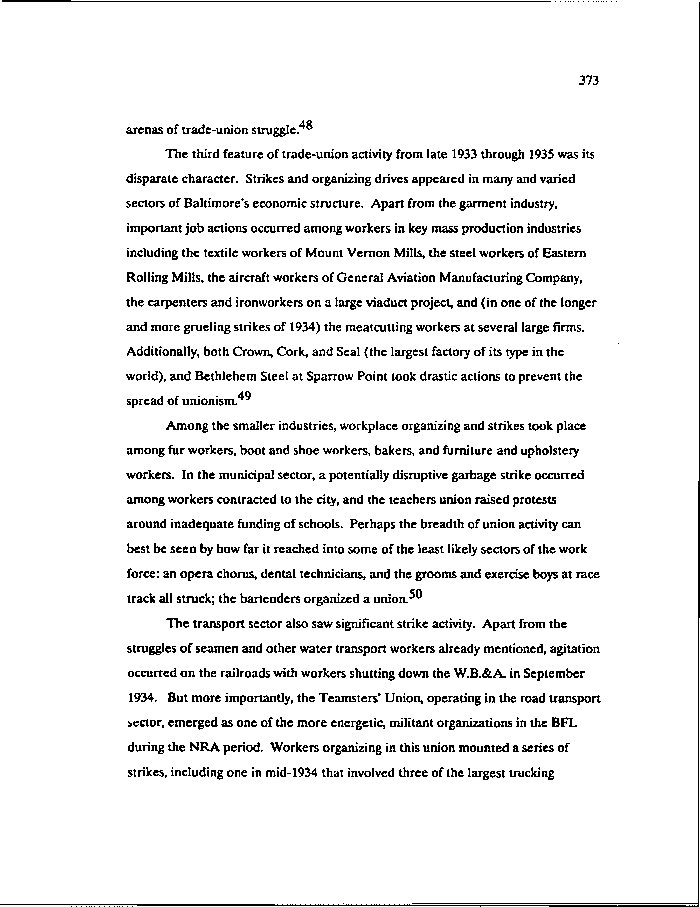|
373
arenas of trade-union struggle.
The third feature of trade-union activity from late 1933 through 1935 was its
disparate character. Strikes and organizing drives appeared in many and varied
sectors of Baltimore's economic structure. Apart from the garment industry,
important job actions occurred among workers in key mass production industries
including the textile workers of Mount Vein on Mills, the steel workers of Eastern
Rolling Mills, the aircraft workers of General Aviation Manufacturing Company,
the carpenters and ironworkers on a large viaduct project, and (in one of the longer
and more gnieling strikes of 1934) the me at cult ing workers at several large firms.
Additionally, both Crown, Cork, and Seal (the largest factory of its type in the
world), and Bethlehem Steel at Sparrow Point took drastic actions to prevent the
spread of unionism.
Among the smaller industries, workplace organizing and strikes took place
among fur workers, boot and shoe workers, bakers, and furniture and upholstery
workers. In the municipal sector, a potentially disruptive garbage strike occurred
among workers contracted to the city, and the teachers union raised protests
around inadequate funding of schools. Perhaps the breadth of union activity can
best be seen by how far it reached into some of the least likely sectors of the work
force: an opera chorus, dental technicians, and the grooms and exercise boys at race
track all struck; the bartenders organized a union.
The transport sector also saw significant strike activity. Apart from the
struggles of seamen and other water transport workers already mentioned, agitation
occurred on the railroads with workers shutting down the W.B.&A. in September
1934. But more importantly, the Teamsters' Union, operating in the road transport
sector, emerged as one of the more energetic, militant organizations in the BFL
during the NRA period. Workers organizing in this union mounted a series of
strikes, including one in mid-1934 that involved three of the largest trucking
|

